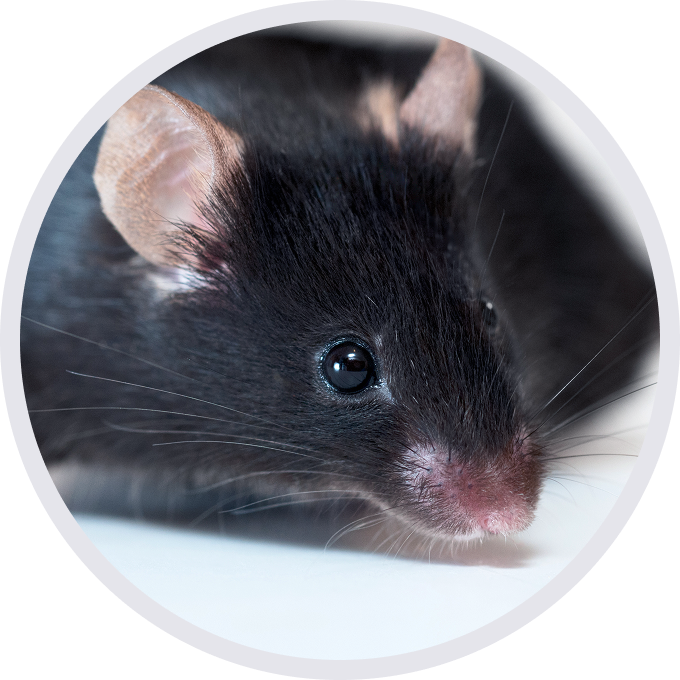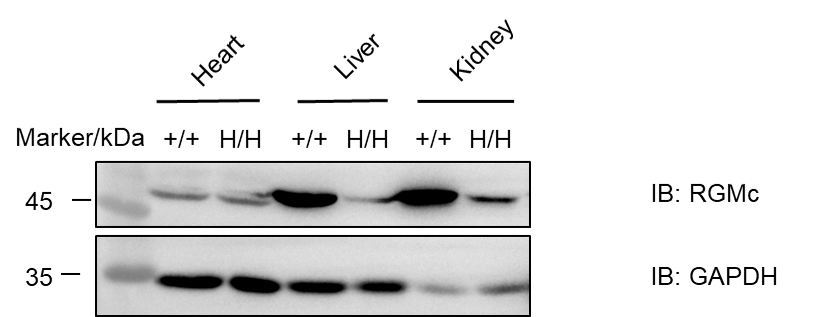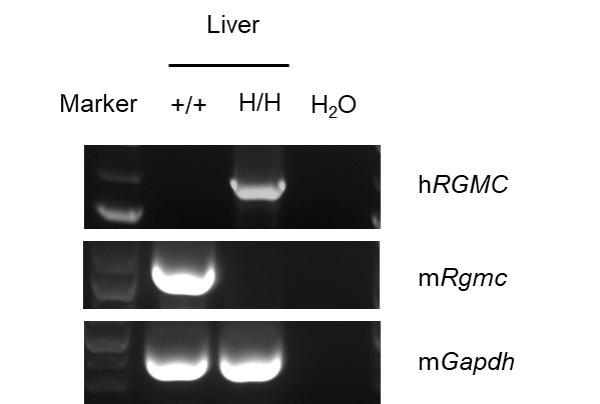
C57BL/6-Hjvtm1(HJV)Bcgen/Bcgen • 112627
Background:
Targeting strategy:
Verification:
Application:
Gene targeting strategy for B-hRGMc mice. The exons 1~4 of mouse Hjv gene that encodes the full-length protein was replaced by human HJV exons 1~4 in B-hRGMc mice. The 5’UTR and 3’UTR region of the mouse gene are replaced by human counterparts. The human HJV expression is driven by human HJV promoter, while mouse Hjv gene transcription and translation will be disrupted.

Western blot analysis of RGMc protein expression in homozygous B-hRGMc mice. Various tissue lysates were collected from wild-type C57BL/6JNifdc mice (+/+) and homozygous B-hRGMc mice (H/H), and then analyzed by western blot with anti-RGMc antibody (Proteintech, 11758-1-AP). 40 μg total proteins were loaded for western blotting analysis. The RGMc protein was detectable in heart, liver, and kidney of wild-type C57BL/6JNifdc mice or homozygous B-hRGMc mice, as the antibody is cross-recognize both human and mouse RGMc.

Strain specific analysis of RGMC mRNA expression in wild-type C57BL/6JNifdc mice and homozygous B-hRGMc mice by RT-PCR. Liver RNA were isolated from wild-type C57BL/6JNifdc mice (+/+) and homozygous B-hRGMc mice (H/H), then cDNA libraries were synthesized by reverse transcription, followed by PCR with mouse and human primers. Mouse Rgmc mRNA was only detectable in wild-type mice. Human RGMC mRNA was only detectable in homozygous B-hRGMc mice.